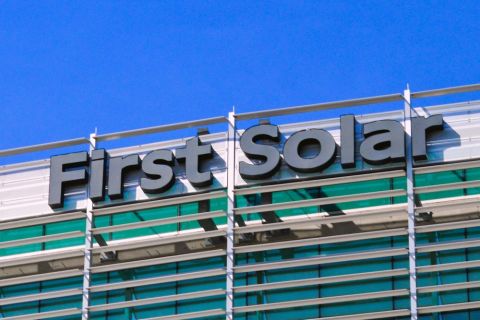Rate of penetration (ROP) and bit durability (BD) have the biggest effects on operational costs. Both must be improved to increase drilling performance. This is more critical in hard and abrasive formations and is rarely met with conventional solutions. Bit features believed to have influences on ROP and durability include cutter size, back rake, cutter count and blade count. When all other design features are kept constant, these cause strong inverse relationships between ROP and durability. Some features such as cutter size and cutter count are dependent on each other and exhibit an inverse relationship. These features do not yield the improvements needed due to the relationships and effects they have on ROP and BD.
Bit stabilization minimizes premature PDC cutter failure due to reduced impact loads, thereby enhancing BD. In addition, stabilization ensures efficient use of available operational parameters (RPM and weight on bit or WOB) for ROP maximization. Stabilization establishes the conditions needed to improve ROP and BD.
ROP and BD cannot be compromised to achieve bit stabilization. Certain bit features and technologies intended to improve bit stabilization have negative effects on ROP and BD, and end up not having the expected effects especially in hard and abrasive formations.
The low depth of cut (LDOC) or managed depth of cut (MDOC) concepts, which aim to enhance stabilization by making bits passive, compromise ROP and BD. With such concepts, the blade tops of PDC bits are raised to heights very close to the cutter tip. ROP potential and BD are compromised.
Due to the reduced cutter exposures of MDOC bits, such bits are only able to use a limited portion of the available diamond. In abrasive and hard formations as well as high-RPM applications, minimal cutter wear brings the blade top into contact with the formation. In these instances, the reduced cutter exposure compromises BD.
Another concept used to improve BD is the back-up cutter. BD is assumed to depend on cutter count, so the intent is diamond content maximization. This assumes that BD is a physical property. However, BD is a functional property that depends on ROP and stabilization. The only certainty resulting from an increased cutter count is reduced ROP. With increased cutter count, bits with back-up blades experience rapid ROP decays with minimal cutter wear. The total wear flat area (due to increased cutter count) is high even with minimal wear. In addition, nozzle layout aimed at ensuring efficient cuttings evacuation tends to be compromised. These situations compromise ROP in hard and abrasive formations (wear flats), and also in soft formations (nozzle layout and cleaning).
Improving PDC bit performance requires a focus on effective design analysis and behavior predictions. An innovative design process coupled with new developments in PDC cutter technology has positive effects on PDC bit performance.
Drilling efficiency: ROP and BD
Drilling efficiency (DE) has primarily been used to categorize bits from an ROP perspective. DE is usually defined as the energy required by a bit to fail or dislocate a unit volume of rock. From this standpoint, bits are classified as being efficient when their energy requirements are low. This definition makes no mention of BD.
ROP can be measured as instantaneous (IR) or average (AR). IR is measured at discrete times or depths and represents a bit’s advancement per unit time in that instance. AR denotes bit advancement in unit time and is measured over the total interval drilled or total time spent in the hole.
IR values are comparatively high in soft formations or at the commencement of a run, when the bit is usually in good condition. AR has a strong dependence on IR, formation hardness, bit behavior, interval length and time spent in hole. High IR values can result in high AR values when the high IR values are sustained over long periods of time or over long intervals. Decaying IR values that are initially high will result in low AR values.
AR is influenced by BD due to the interval and time effect. Bits must have good BD characteristics in order to sustain high IR values over long periods of time or distance. PDC cutter deterioration as a result of impact damage and wear must be minimized in order to maintain high IR values, which will then yield high AR values.
Knowing the effect of BD on AR, a new definition is needed for DE: a bit is said to exhibit effective DE when it achieves high IR values and establishes the conditions needed for AR maximization.
Project challenges
A project in Kuwait required drilling a 16-in. hole. The section’s heterogeneity and the large hole diameter were challenges even for roller-cone bits. A drilling performance improvement task force (PTF) was created to answer these questions:
1. Can a PDC bit be developed for the 16-in. hole?
2. Can the section be drilled with a single PDC bit?
3. Can PDC bits perform consistently across different fields?
4. What are ROP expectations for the PDC bit?
Development first focused on design and evaluation methodology. Sensitivity analyses that detailed the bit’s response to different operational conditions (WOB and RPM) were also performed. In addition, the evaluations sought to minimize bit vibrations to reduce their negative effects on ROP and BD without resorting to compromising solutions such as LDOC and back-up blades.
The process then focused on development of application-specific PDC cutters that delayed wear initiation and growth without compromising impact resistance. The PDC cutters had to have superior abrasion and thermal resistance properties.
A “middle ground” approach shortened the bit development cycle without reducing the benefits of laboratory and field tests. A laboratory testing program was made more comprehensive. Processes were developed to model bit behavior and performance. Specific analytical algorithms were also developed.
Drilling environment, rock type, rock properties and operational parameters must be accurately described. Cohesion and internal friction angle values have shown to be more accurate in characterizing rock mechanical properties and behavior. Lithology type and UCS were used as inputs to determine cohesion and internal friction angle. Friction values at the cutter/rock interface, drilling fluid density and wellbore pressure were also used as inputs. Material properties of PDC cutters and thermal properties of rocks to be drilled were also used in the analysis. Performance sensitivity analysis using different ranges of operational parameters (consistent with offset bit runs and bottomhole assembly design) were also performed.
Bit development
Two bits were developed. PDC-A was used in the Rawdhatain field of Northern Kuwait and increased ROP by 32% over the benchmark bit. Considering the dull condition of PDC-A and cutter development progress, an ROP target increase of 20% over PDC-A was established for the new bit. Threshold values were developed for PDC-B based on:
• ROP comparisons for PDC-A;
• Modeled loading, work and wear-rate values of PDC-A;
• ROP expectations for PDC-B;
• Anticipated loading, work and wear rate values for PDC-B; and
• Impact and abrasion resistance comparisons between old and new PDC cutters.
PDC-B was used in the Minagish field, West Kuwait, where the benchmark bit had drilled the 16-in. interval (2,491 ft or 759 m) at 8.4 ft (2.5 m) per hour. PDC-B drilled the interval (2,196 ft or 670 m) at 18.93 ft (5.77 m) per hr.
Conclusion
Bit stabilization influences ROP and BD. Certain design features cause inverse relationships between ROP and durability. DE, though measured in terms of ROP, is influenced by bit durability. Cutter count and cutter size exhibit an inverse relationship. Design methods based on LDOC and back-up cutters compromise the ROP/BD relationship. Behavior and performance prediction tools are critical for effective bit development. PDC cutter development is critical and must be used to complement bit design.
Recommended Reading
SunPower Begins Search for New CEO
2024-02-27 - Former CEO Peter Faricy departed SunPower Corp. on Feb. 26, according to the company.
First Solar’s 14 GW of Operational Capacity to Support 30,000 Jobs by 2026
2024-02-26 - First Solar commissioned a study to analyze the economic impact of its vertically integrated solar manufacturing value chain.
enCore Energy Appoints Robert Willette as Chief Legal Officer
2024-02-01 - enCore Energy’s new chief legal officer Robert Willette has over 29 years of corporate legal experience.
Humble Midstream II, Quantum Capital Form Partnership for Infrastructure Projects
2024-01-30 - Humble Midstream II Partners and Quantum Capital Group’s partnership will promote a focus on energy transition infrastructure.
TPG Adds Lebovitz as Head of Infrastructure for Climate Investing Platform
2024-02-07 - TPG Rise Climate was launched in 2021 to make investments across asset classes in climate solutions globally.





